Augustus Frederic Rudolf Hoernlé CIE, also referred to as Rudolf Hoernle or A. F. Rudolf Hoernle, was a German Indologist and philologist. He is famous for his studies on the Bower Manuscript (1891), Weber Manuscript (1893) and other discoveries in northwestern China and Central Asia particularly in collaboration with Aurel Stein. Born in India to a Protestant missionary family from Germany, he completed his education in Switzerland, and studied Sanskrit in the United Kingdom. He returned to India, taught at leading universities there, and in the early 1890s published a series of seminal papers on ancient manuscripts, writing scripts and cultural exchange between India, China and Central Asia. His collection after 1895 became a victim of forgery by Islam Akhun and colleagues in Central Asia, a forgery revealed to him in 1899. He retired from the Indian office in 1899 and settled in Oxford, where he continued to work through the 1910s on archaeological discoveries in Central Asia and India. This is now referred to as the "Hoernle collection" at the British Library.

Horace Hayman Wilson was an English orientalist who was elected the first Boden Professor of Sanskrit at Oxford University.
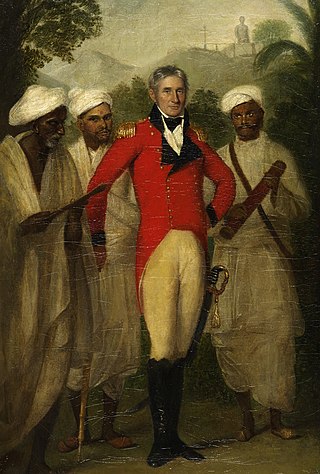
Colonel Colin Mackenzie was Scottish army officer in the British East India Company who later became the first Surveyor General of India. He was a collector of antiquities and an orientalist. He surveyed southern India, making use of local interpreters and scholars to study religion, oral histories, inscriptions and other evidence, initially out of personal interest, and later as a surveyor. He was ordered to survey the Mysore region shortly after the British victory over Tipu Sultan in 1799 and produced the first maps of the region along with illustrations of the landscape and notes on archaeological landmarks. His collections consisting of thousands of manuscripts, inscriptions, translations, coins and paintings, which were acquired after his death by the India Office Library and are an important source for the study of Indian history. He was awarded a Companion of the Order of the Bath on 4 June 1815.

Manabendra Nath Roy was a 20th century Indian revolutionary, philosopher, radical activist and political theorist. Roy was the founder of the Mexican Communist Party and the Communist Party of India.
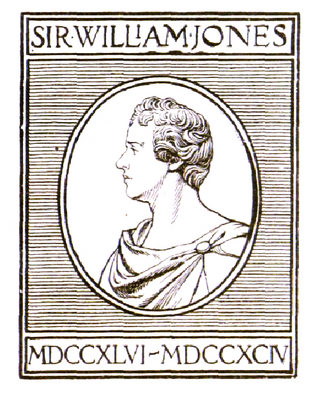
The Asiatic Society is a Government of India organisation founded during the Company rule in India to enhance and further the cause of "Oriental research". It was founded by the philologist William Jones on 15 January 1784 in a meeting presided over by Justice Robert Chambers in Calcutta, the then-capital of the Presidency of Fort William.
The Oxford Centre for Hindu Studies, founded in 1997 and based in Oxford, England, is a research academy focused on the study and teaching of Hindu cultures of India and Nepal. It develops academic programmes of education, research and publishing in Hindu studies. It aims to encourage the Hindu community in the academic study of their own traditions and cultures. Till 2020, it functioned as a "recognised independent center" under the University of Oxford.
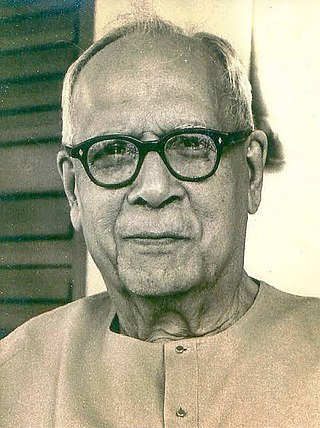
Ramesh Chandra Majumdar was a historian and professor of Indian history. Majumdar is a noted historian of modern India. He was a former Sheriff of Kolkata.

Saraswathi Mahal Library, also called Thanjavur Maharaja Serfoji's Saraswathi Mahal Library is a library located in Thanjavur (Tanjore), Tamil Nadu, India. It is one of the oldest libraries in Asia established during 16th century by Nayakar kings of Thanjavur and has on display a rare collection of Palm leaf manuscripts and paper written in Tamil and Sanskrit and a few other indigenous languages of india. The collection comprises well over 49,000 volumes, though only a tiny fraction of these are on display. The library has a complete catalog of holdings, which is being made available online. Some rare holdings can be viewed on site by prior arrangement. Encyclopedia Britannica mentions the library as the "Most remarkable library of India".

Tigalari, also known as Tulu script, is a Southern Brahmic script which was used to write Tulu, Kannada, and Sanskrit languages. It was primarily used for writing Vedic texts in Sanskrit. It evolved from the Grantha script. It is called as Tigalari lipi in Kannada-speaking regions and Tulu speakers call it as Tulu lipi. It bears high similarity and relationship to its sister script Malayalam, which also evolved from the Grantha script.

Gujarat Vidyapith is a deemed university in Ahmedabad, Gujarat, India. This institute was founded in 1920 by Mahatma Gandhi, India's "Father of the Nation" and the leader of the Indian independence movement. It has been deemed university since 1963.

The Charles Patterson Van Pelt Library is the primary library at the University of Pennsylvania.
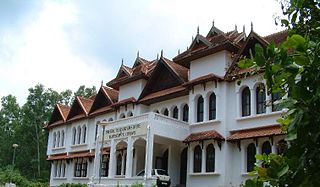
The Oriental Research Institute & Manuscripts Library, University of Kerala, is one of the leading centres of Indology in India. It is located at Kariavattom, Thiruvananthapuram, Kerala. The institute carry out researches on Indian language manuscripts, about 80% of which are in Sanskrit. The department is microfilming the manuscripts of certain technical subjects.

Palm-leaf manuscripts are manuscripts made out of dried palm leaves. Palm leaves were used as writing materials in the Indian subcontinent and in Southeast Asia dating back to the 5th century BCE. Their use began in South Asia and spread to other regions, as texts on dried and smoke-treated palm leaves of the Palmyra or talipot palm. Their use continued until the 19th century when printing presses replaced hand-written manuscripts.

Vishwanathan Venkatachalam was an eminent Sanskrit scholar. He served as the vice-chancellor of Sampurnanand Sanskrit University, Varanasi, India for two terms. He was awarded the Padma Shri in 1989 by the Government of India for his valuable contribution to the field of Sanskrit research and education.
William Norman Brown was an American Indologist and Sanskritist who established the first academic department of South Asian Studies in North America and organized the American Oriental Society in 1926. He was the Professor of Sanskrit at the University of Pennsylvania for most of his academic career. He was president of the Association for Asian Studies in 1960. He is considered the founder of the field of South Asian Studies, which he pioneered in his career over four decades at the University of Pennsylvania, where he helped to found the Department of Oriental Studies (1931), and later single-handedly founded the Department of South Asia Regional Studies (1948). These departments are now survived by the departments of East Asian Languages and Civilizations, Near Eastern Languages and Civilizations, and South Asia Studies. W. Norman Brown also founded the American Institute of Indian Studies, which was located in the Van Pelt Library at the University of Pennsylvania. Brown was elected to the American Philosophical Society in 1946.
Venkataraman Raghavan (1908–1979) was a Sanskrit scholar and musicologist. He was the recipient of numerous awards, including the Padma Bhushan and the Sahitya Akademi Award for Sanskrit, and authored over 120 books and 1200 articles.
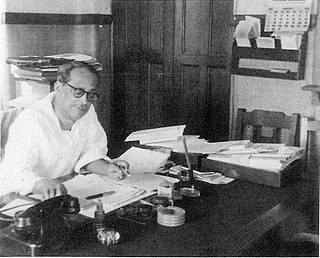
Prabodh Chandra Bagchi or P. C. Bagchi was one of the most notable Sino-Indologists of the 20th century. He was the third Upacharya (Vice-Chancellor) of Visva-Bharati University.
Ludo Rocher (1926–2016) was an eminent Sanskrit scholar, and the W. Norman Brown Professor Emeritus of South Asia Studies at the University of Pennsylvania.
Ludwik Sternbach was a lawyer, United Nations officer, and Indologist.

Jay I. Kislak was an American businessman, philanthropist, bibliophile, and aviator.













